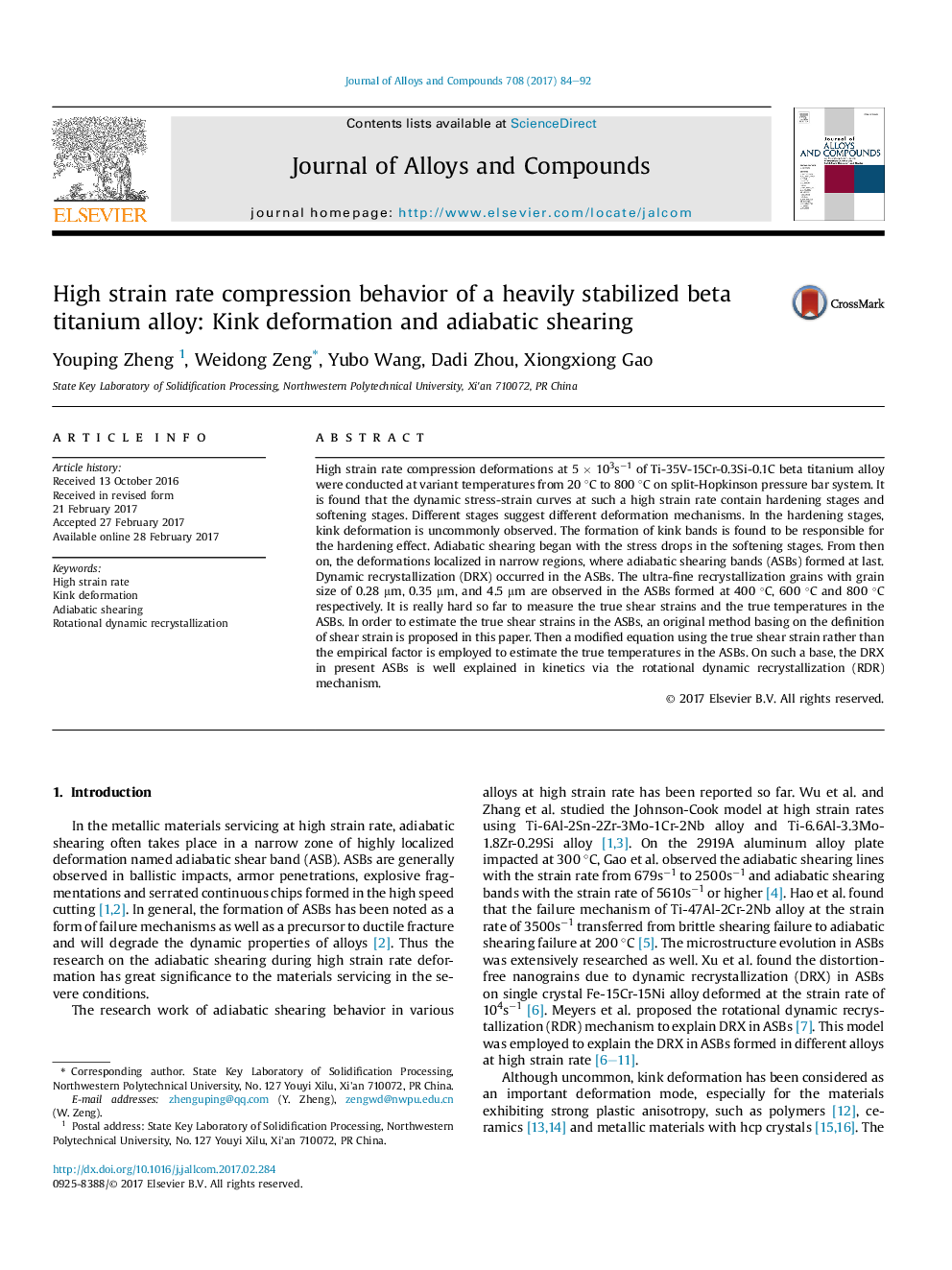| Article ID | Journal | Published Year | Pages | File Type |
|---|---|---|---|---|
| 5459493 | Journal of Alloys and Compounds | 2017 | 9 Pages |
Abstract
High strain rate compression deformations at 5 Ã 103sâ1 of Ti-35V-15Cr-0.3Si-0.1C beta titanium alloy were conducted at variant temperatures from 20 °C to 800 °C on split-Hopkinson pressure bar system. It is found that the dynamic stress-strain curves at such a high strain rate contain hardening stages and softening stages. Different stages suggest different deformation mechanisms. In the hardening stages, kink deformation is uncommonly observed. The formation of kink bands is found to be responsible for the hardening effect. Adiabatic shearing began with the stress drops in the softening stages. From then on, the deformations localized in narrow regions, where adiabatic shearing bands (ASBs) formed at last. Dynamic recrystallization (DRX) occurred in the ASBs. The ultra-fine recrystallization grains with grain size of 0.28 μm, 0.35 μm, and 4.5 μm are observed in the ASBs formed at 400 °C, 600 °C and 800 °C respectively. It is really hard so far to measure the true shear strains and the true temperatures in the ASBs. In order to estimate the true shear strains in the ASBs, an original method basing on the definition of shear strain is proposed in this paper. Then a modified equation using the true shear strain rather than the empirical factor is employed to estimate the true temperatures in the ASBs. On such a base, the DRX in present ASBs is well explained in kinetics via the rotational dynamic recrystallization (RDR) mechanism.
Keywords
Related Topics
Physical Sciences and Engineering
Materials Science
Metals and Alloys
Authors
Youping Zheng, Weidong Zeng, Yubo Wang, Dadi Zhou, Xiongxiong Gao,
